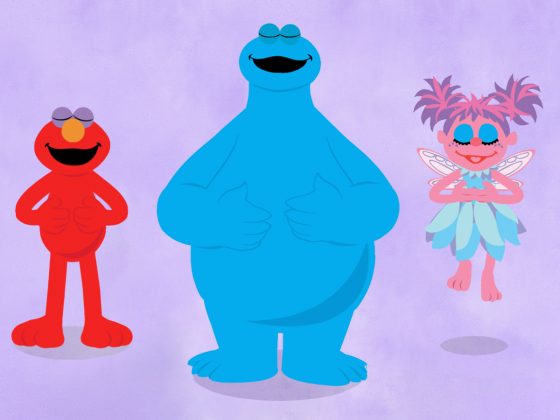
Slow It Down
It's time to relax, and Elmo, Cookie Monster, and Abby Cadabby guide you in these exercises to help calm children experiencing overwhelm with big feelings.
You can let children use this activity however you see fit. You can play it together, or, if a child is in “full meltdown,” you can simply hand it over and give them some space in which they can calm down.
Each session begins with a Muppet leading a short “breathe in, breathe out” exercise. Then children choose one of six activities, including drawing in sand, stamping in glitter, “playing” in slime, experimenting with calming musical tones, and watching mesmerizing slow-motion video. Each session ends with a final breathing exercise.
Here are some other things to try. Keep in mind that it’s most important to first establish children’s sense of safety. If children are not feeling safe, mindfulness strategies will not be helpful and can even be harmful. Let them know they don’t have to close their eyes, that you’re there, and remember that safety is different for each child—it may mean moving around and being loud first!
Squeeze balls. These can be used to help children learn deep-muscle relaxation. Guide them in the process by encouraging them to squeeze a ball in each hand as they “squeeze tight” every muscle in their body as hard as they can. Have them stay in that position for five seconds. Then have them release their tension, relax, and take a deep breath.
A comfort object. Hugging a stuffed animal, soft blanket, or big sweater can give kids a sense of control and security by being in contact with a familiar and calming personal treasure.
Bubbles. Blowing bubbles and watching them form, float, and pop can be a soothing experience. That’s because of the calming effects of deep breathing, which you can help kids to learn. Older children can blow bubbles by themselves; younger ones will need adult help. For children who are more withdrawn and quiet, this may help them engage and get active.
A feely bag/box. This tool can be used in a focusing exercise to help kids slow down and ground themselves in their bodies by closing their eyes and concentrating on just one sense: touch. To create a feely bag or box, put various items with different textures into one bag or box. Items might be fabric swatches with different textures (burlap, velvet, wool), rough or polished stones, a feather, piece of sandpaper, cotton ball, piece of sponge, and so on. With their eyes closed, ask kids to take out one item and notice and describe what it feels like.
Comfy-cozy space. Create a comfy, cozy, calm space or nook where kids feel protected and safe. Let them know that this is “their space” and allow them some privacy when they want or need it. Kids may become tuned in enough to their emotional state to ask to go to that space themselves when they need it. That’s an important step in learning to set boundaries and practicing self-care, which is a key component of developing resilience.
Other sensory items. You can use lavender or chamomile oil for calming, mint or lemongrass to “activate,” and sound (music, drumming, etc.) to shift or support mood.
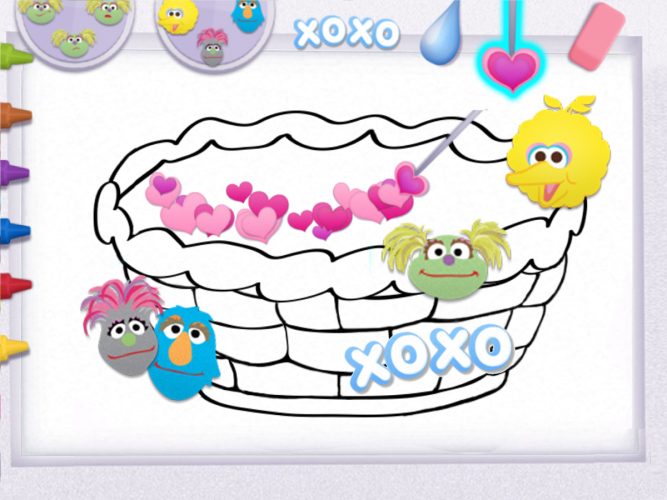
Artmaker: Draw It Out! Foster Care
Digital, open-ended drawing activities to help children with expressing feelings.
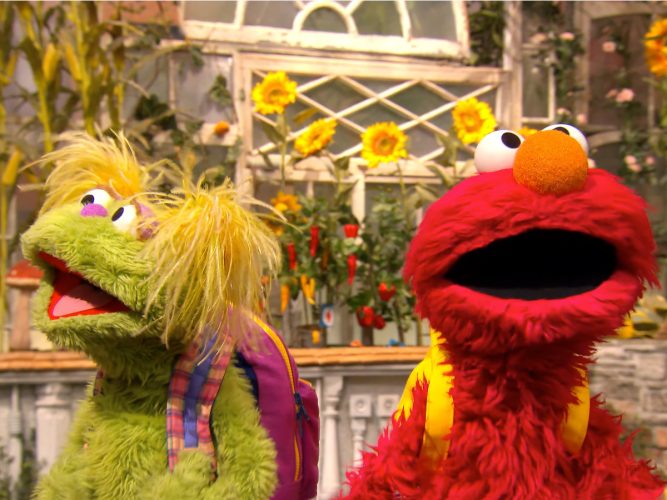
The World Sings to You
A song about listening.
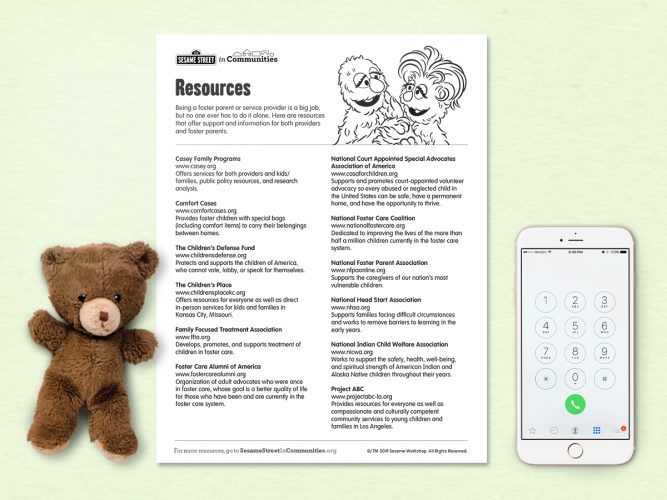
Foster Care Resources
Resource sheet for providers and parents working within the foster system.
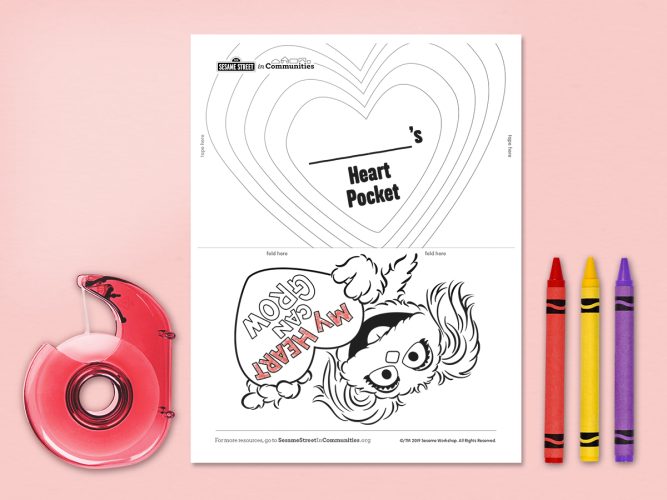
Heart Pocket
Here’s an activity to remind children that they do not lose their memories when they’re separated from those they love—they carry their memories in their hearts.

Talking About It
Suggested answers to children’s most difficult questions about foster care.
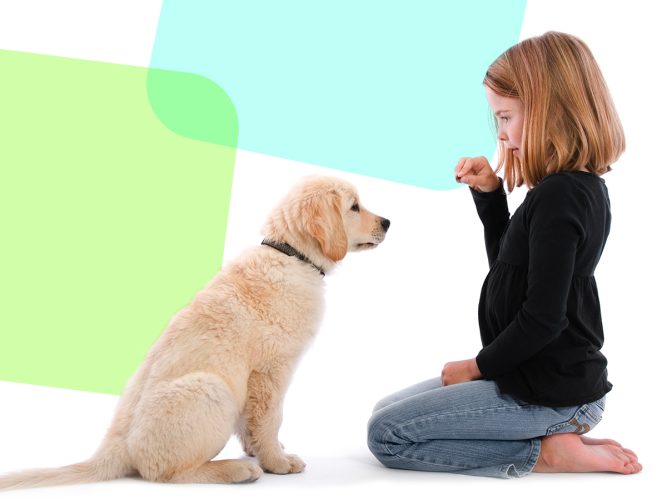
The Creature Connection
How the human-animal bond can help heal.
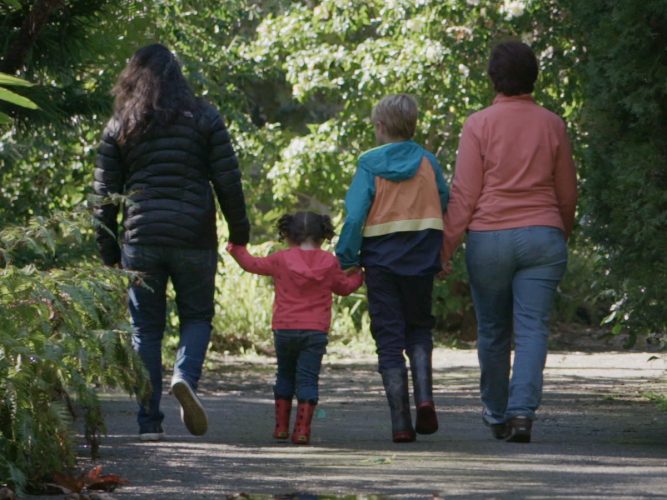
Challenges & Strategies
Reflect on a moment or a period from your childhood when you went through a challenging transition (if you’re with a group, you might share with others).
